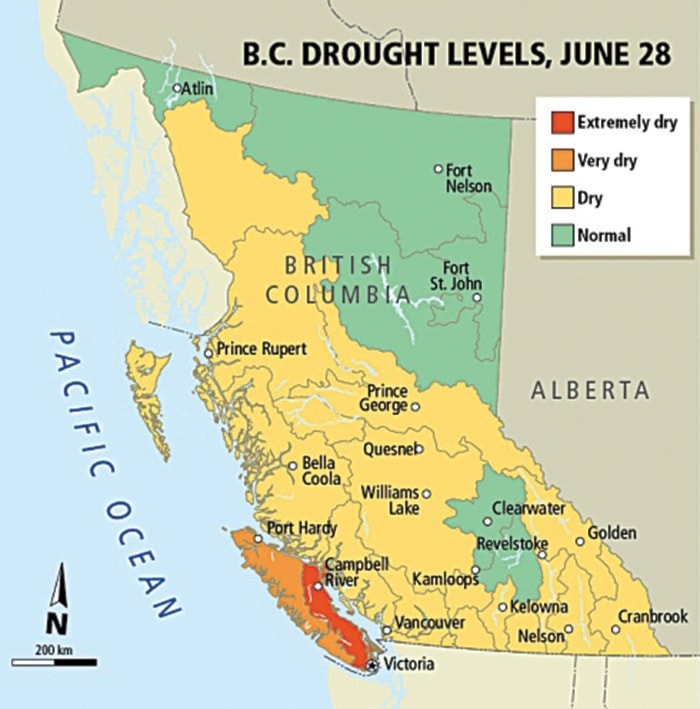The B.C. Drought Levels Map released June 28 has a red strip running all along the east coast of Vancouver Island from Victoria to Campbell River; that’s where the drought gauge has already nudged into ‘Extremely Dry’ territory.
Level 4 drought conditions, the highest setting, are in effect again here, as the province tries to conserve water going into what is shaping up to be another very dry summer.
This is the earliest the province has moved to a Level 4 rating on southern Vancouver Island since the rating system began in 2010. Last year, the region was upgraded to Level 4 on July 3.
So a June 29 fire in North Oyster brought an immediate response, with fire halls from as far as Crofton responding to a call for mutual aid. A helicopter was also engaged in the fight to knock it down.
It’s a response that may be played out again, as we move into what many believe will be another summer of record high temperatures and low rainfall. And forest fires aren’t the only environmental threat looming due to the predicted drought.
Water shortages and threats to salmon stocks are also increasingly likely.
As a result the province is putting residents on the highest drought alert and closing most streams and rivers to angling. Residents are also being urged to reduce water consumption.
While residents in the Cowichan Valley Regional District have cut their water consumption by 30 per cent since Stage 2 water restrictions came into effect in May, CVRD board chairman Jon Lefebure said more work needs to be done conserving local water resources as the drought becomes more severe.
He said the water being used by the CVRD’s 19 water utilities is 13 per cent higher than the provincial average.
The regional district is currently averaging 353.5 litres a day per person, compared to the provincial average of 311.9 litres.
The cooler weather and grey skies in recent weeks may be masking the severity of the drought.
Rainfall in April and May was less than 25 per cent of normal, and June had only seen only 50 to 60 per cent of normal precipitation during the first half of the month.
“I encourage Cowichan Valley residents to continue their water conservation efforts,” said Lefebure. “This conservation will help us protect our water resources as we enter the typically drier summer months.”
Meanwhile, the drought has lowered water levels and reduced flow in rivers and streams, which prompted the province to close down the freshwater sports fishery across much of the southern Island, including in the Cowichan Valley, starting on July 1.
The fishing closures will remain in place until drought conditions improve significantly, likely until at least Sept. 1.
With files from Robert Barron, Black Press
